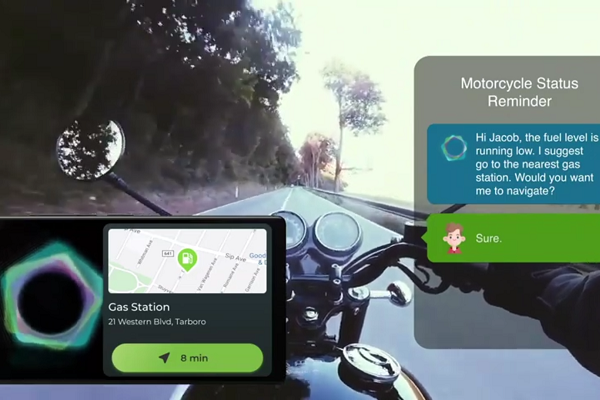Cerence Expands Voice AI Platform to Motorcycles and Elevators
Cerence can now install its previously automotive-focused custom voice assistants into elevators and two-wheel vehicles using the newly announced Cerence Mobility Platforms. The new solution expands the definition of a vehicle beyond the standard four-wheel car, leveraging Cerence’s revamped enhanced voice assistant platform Cerence Drive 2.0 and new Cerence Cloud Services.
Forward and Upward
Cerence spun out of general voice AI developer Nuance to focus on what it refers to as “a world in motion.” Until now, that meant cars on the road. Now, it can also mean scooters and motorcycles with the Cerence 2-Wheeler Mobility Platform. The new platform translates Cerence’s AI for those vehicles, with a smartphone integration with the voice assistant connecting to Bluetooth headsets and helmets. It can even replace the screen in a car by projecting images onto a headunit, as seen in the video.
Meanwhile, Cerence Building Mobility Platform shifts that “world in motion” vertically into elevators. Property managers will able to use the platform to make voice-operated elevators by integrating the AI into the existing operating system. Passengers would not need to use the buttons, just say the floor they want to go to or the name of the person or company they are heading to if that data is in the system. Notably, the platform can handle multiple languages at once, responding to users in whatever language they say the command.
“Cerence is making the world of mobility connected, bridging the digital and analog worlds with the most advanced AI,” Cerence senior vice president and general manager of mobility solutions Charles Kuai said. “Today’s innovations are backed by modern business models and accelerated by our AI-powered, out-of-the-box thinking. Whether driving it, riding it, or standing in it, the needs and demands of conversational AI interaction for mobility are only increasing for consumers that want intelligent assistants and services on their daily journeys.”
Drive On
All of the new options rely on Drive 2.0 and Cerence Cloud Services. Cerence describes Drive 2.0 as a faster, more accurate version of Cerence’s widely-used virtual assistant builder, capable of speaking more languages than any competitor. Automakers have already started incorporating some of Drive 2.0’s features, with plans to deploy them in cars later in 2021. The unified software architecture helps simplify adding the AI to new vehicles, however that term gets defined.
Two-wheel vehicles and elevators are a natural outgrowth of Cerence’s steady addition of new abilities to its platform. Cerence Look, which combines online databases and gaze-tracking cameras to turn a car’s voice assistant into a real-time tour guide, would fit perfectly with a motorcycle or even some building’s elevators, as would a variation of the driver-customized wake word feature. Cerence doesn’t seem to lack ideas, as evidenced by a synthetic version of CEO Sanjay Dhawan’s voice, created with Cerence Reader, reading out some of the company’s recent earnings call.
Cerence doesn’t lack competition for custom voice assistants in vehicles or out. The COVID-19 pandemic has spurred plenty of interest in voice controls. Voice tech developer Picovoice debuted its own elevator and intercom AI back in March, while smart intercome startup ButterflyMx raised $35 million partly on the surge of interest in contactless technology. With Amazon now getting into custom voice assistants built with Alexa technology, starting with cars built by Fiat Chrysler, Cerence and other smaller firms will likely need every scrap of ingenuity they can muster.
Follow @voicebotai Follow @erichschwartz
Cerence Look Adds Visual AI to Automotive Virtual Assistants
Mercedes-Benz Will Keep Using Cerence to Run Revamped MBUX Virtual Assistant









